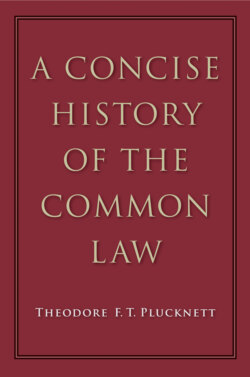Читать книгу A Concise History of the Common Law - Theodore F. T. Plucknett - Страница 65
На сайте Литреса книга снята с продажи.
THE ACT OF SETTLEMENT
ОглавлениеAfter the death of Queen Mary (1694), William III ruled alone, until he in turn was succeeded by her sister, Anne (1702-1714), who was therefore the last of the reigning Stuarts; in order to secure the succession, the Act of Settlement was passed in 1701 which not only limited the descent of the Crown (in accordance with which the present royal family reigns) but also added a few constitutional provisions supplementary to those of the Bill of Rights. It required the monarch to be in communion with the Church of England, and not to leave the country without parliamentary consent—an irksome provision which was soon repealed. Membership of the Privy Council and of Parliament was limited to British subjects of British parentage. It was likewise provided “that no person who has an office or place of profit under the King, or receives a pension from the Crown, shall be capable of serving as a member of the House of Commons”. This attempt to limit the Crown’s influence in Parliament was subsequently amended1 in order to permit ministers of the Crown to sit in the House of Commons by allowing them to seek re-election after their appointment to a salaried office. Such was the practice until 1926, when the need for re-election was abolished. Another chapter provided that judges should hold office during good behaviour at fixed salaries, and that they should only be removable by His Majesty upon an address of both Houses of Parliament; the complete independence of the bench was therefore permanently established.
